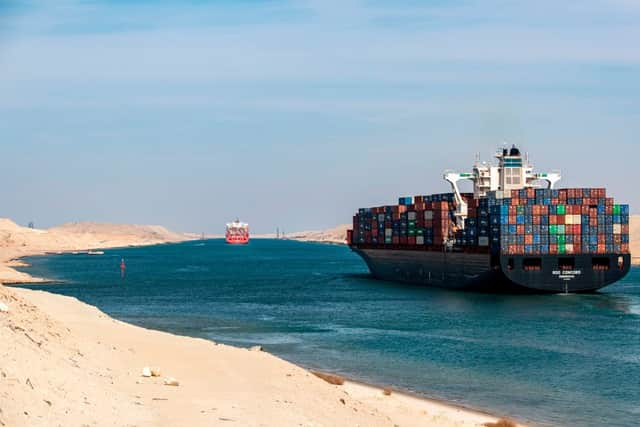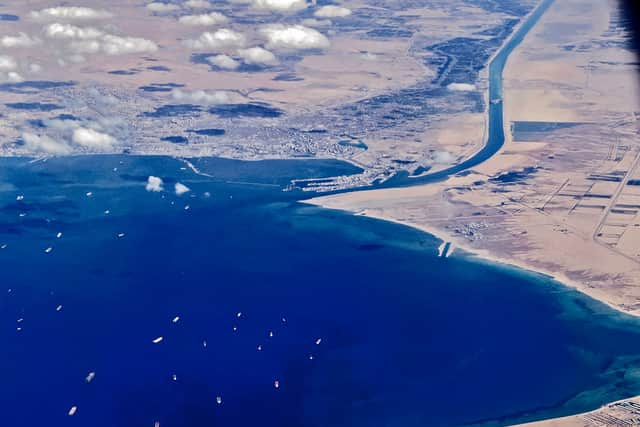Is a cargo ship stuck in the Suez Canal? Blockage explained, location - what happened to Ever Given in 2021?
and live on Freeview channel 276
It is almost two years since one of the world’s largest container ships - the Ever Given - blocked the Suez Canal.
The 221,000 tonne, 400-metre long ship - which would tower over UK landmarks like the Eden Project in Cornwall and Edinburgh Castle if it was placed next to them - caused an international trade incident when it got wedged across the key Egyptian waterway in March 2021.
Advertisement
Hide AdAdvertisement
Hide AdThe six day-long incident caused months of disruption around the world, with people in the UK experiencing shortages of products, such as jerry cans and mountain bikes. The ship, and its even bigger sister ship the Ever Ace, have subsequently docked in the UK a number of times without incident.
But anxieties remain about problems in the Suez Canal, given how vital it is to global trade routes. These concerns mounted on Monday (9 January 2023) when another tanker ran into difficulties in the narrow shipping channel.
So, what happened - and how serious was the incident? Here’s everything you need to know.


What is the Suez Canal?
The Suez Canal is a major international trade route that connects the Mediterranean Sea with the Red Sea. It cuts through the country of Egypt between the towns of Port Said in the north and Suez in the south.
Advertisement
Hide AdAdvertisement
Hide AdIt was constructed using forced labour between 1859 and 1869 by the French Empire, which controlled Egypt at the time. The channel’s construction meant international trade could take place much more quickly between Europe and Asia, as passage through the Suez Canal was several weeks’ faster than voyaging around the bottom of Africa.
The Suez Canal is more than 120 miles (193km) long, around 205 metres wide and 24 metres deep. Ships sailing through it have to travel in convoys given how narrow the canal is. One northbound and one southbound convoy pass through the channel every day, with between 1,500 and 1,700 ships using the channel every month.
What happened in the Suez Canal?
According to a report from the Reuters news agency, shipping traffic through the Suez Canal was disrupted in the early hours of Monday (9 January) when a cargo ship broke down in the channel.
The M/V Glory was travelling southwards when the incident occurred. It had sailed 24 miles (38km) from Port Said on the Mediterranean Sea when it suffered what the Suez Canal Authority described as a technical fault.


Advertisement
Hide AdAdvertisement
Hide AdFour tugs have since towed the stricken ship to a repair area close to the town of Al Ismailiya. The incident is only expected to create minor backlogs in the Suez Canal, as regular shipping movements resumed at 11am local time (9am GMT).
The 225 metre-long ship had been destined for China having left Ukraine’s Chornomorsk port on Christmas Eve 2022 carrying 65,970 metric tonnes of corn, according to Istanbul-based United Nations group the Joint Coordination Centre (JCC). The Marshall Islands-flagged carrier had previously been inspected and cleared for a voyage by the JCC in Istanbul on 3 January.
The JCC is the body overseeing grain exports from Ukraine after they were disrupted by Russia’s invasion of its western neighbour. It includes representatives from the United Nations, Turkey, Ukraine and Russia.
Comment Guidelines
National World encourages reader discussion on our stories. User feedback, insights and back-and-forth exchanges add a rich layer of context to reporting. Please review our Community Guidelines before commenting.
